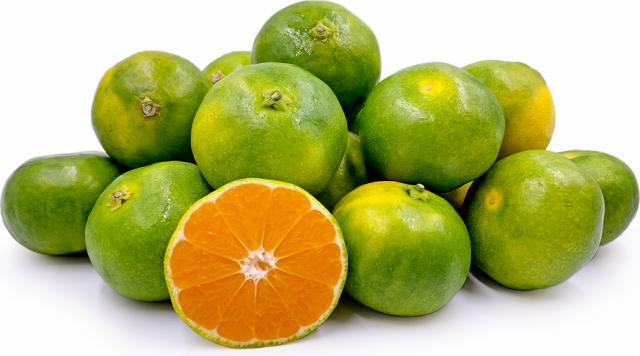
Satsuma Miyagawa, o più semplicemente miyagawa per il mercato alimentare del paese, è uno dei molti nomi del Citrus unshiu, frutto di una specie appartenente agli agrumi, tipico del Giappone pur avendo avuto, come la quasi totalita’ degli agrumi, origine in Cina, dove ancora oggi viene utilizzato.
It is recognizable by various characteristics: a lot similar to the common mandarin, often has a green skin even when fully ripe, it is seedless, has an excellent skin-pulp ratio, is juicy. It is consumed in Japan, China, South Africa, Europe, India and America.
Speaking of taste, we will soon discover the reason for its various local names that refer to honey: it is one of the sweetest citrus fruits, with the fiber of the septa, the white or transparent parts that enclose the pulp and the oil vesicles, very tender, a characteristic that gives it a very pleasant consistency.
The skin is fine and rich in essential oils, easy to remove and dry to be used both in popular medicines as well as in local cuisines, especially the Chinese one.
Cultivability of satsuma miyagawa
Because of all these qualities, of the fact that it is an easily transportable fruit and which comes from a vigorous plant, satsuma miyagawa is one of the most commercial citrus fruits and also in the country, where the market is already saturated by the trade of home-grown citrus fruits, it is gaining ground both among consumers and producers.
Its cultivation has been documented for more than 500 years and there are currently more than 200 varieties, some more rounded, others form of offer; some with green skin, others yellow, others orange. The juice extracted from it is always much more orange than orange and mandarin juice, because of a higher content of beta-carotene. In a few varieties the pulp and juice are as red as in blood oranges.
Read also Rare citrus varieties >>
Properties and benefits of satsuma miyagawa
Let's move on to the properties and benefits of consuming satsuma miyagawa. Thanks to numerous flavonoids il satsuma miyagawa it is an excellent antagonist of all disorders due to oxidative stress, such as chronic inflammation, premature aging caused by free radicals, various forms of cancer. In this sense, satsuma miyagawa has very similar effects to those given by the best citrus fruits and tomatoes.
Its levels of hesperidin, narirutin, rutin and high special flavonoids are in fact among the highest, and these bioactive agents are phenomenal detoxifiers.
On balance, miyagawa satsuma juice can be considered an excellent preventive remedy against oxidative stress. In addition, regular consumption of citrus fruits such as satsuma miyagawa strongly reduces the risk of contracting some cancers, especially colorectal cancer, esophageal cancer, stomach cancer, and finally another lethal ailment such as heart attack.
In addition to flavonoids, the biochemical range of satsuma miyagawa extends to some essential amino acids, terpenes, phenolic acid, carotenoids, especially beta-carotene. In traditional oriental medicines is considered one of the best remedies in cases of risk of heart attack, diabetes mellitus and drug-resistant oxidative pathologies.
In Korea, where it is the most consumed citrus fruit, it is used to restore blood circulation and therefore the health of the bronchi, especially in the presence of some form of asthma. Aurapten, betacryptozanthin and the high level of good quality limonene are considered anti-inflammatory, anti-allergic, antioxidant, anti-tumor and anti-arteriosclerotic.
Read also Lime and lemon, two citrus fruits in comparison >>


























